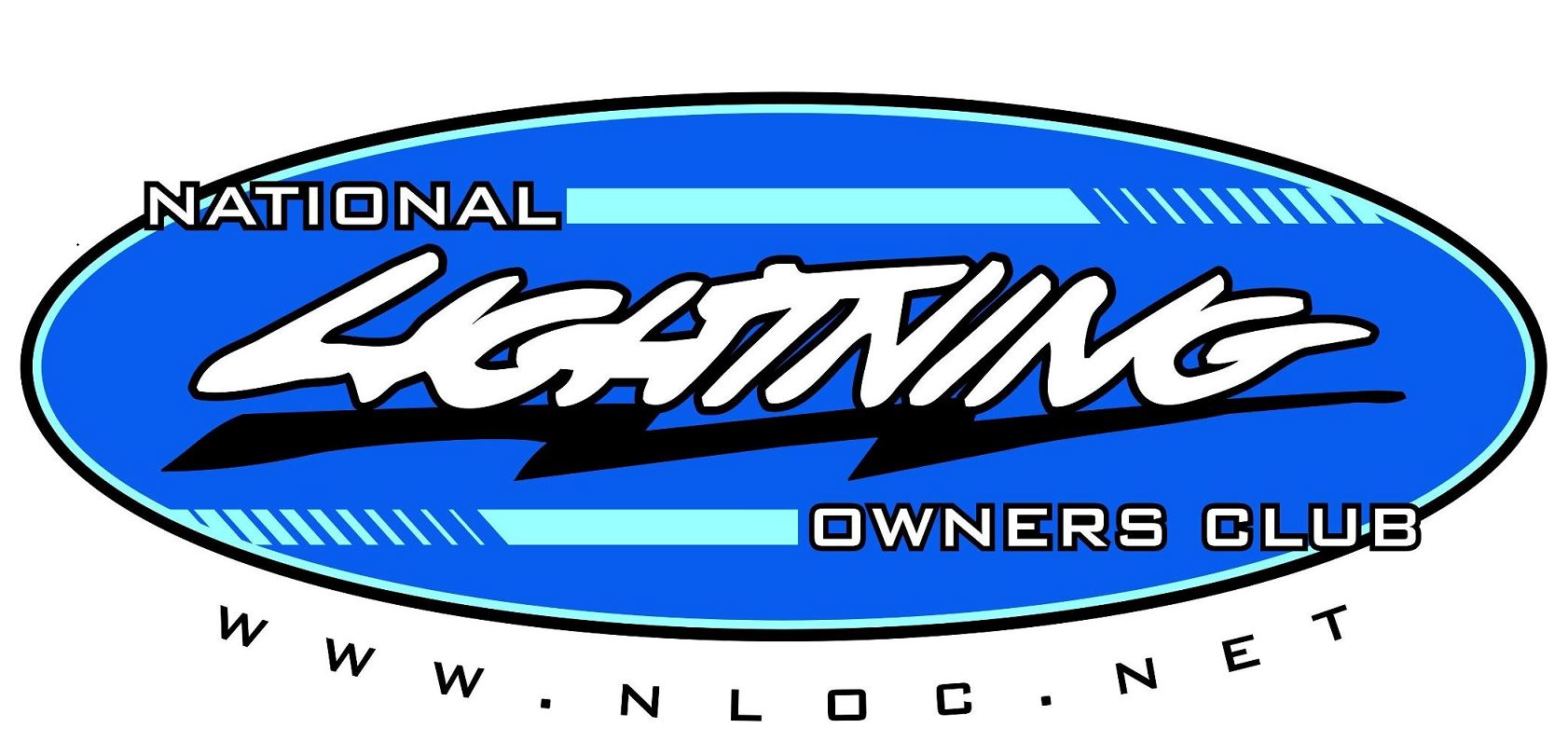First generation (1993-1995)
Ford introduced the model in 1993 to compete with the GMC Syclone and, primarily, the Chevrolet 454 SS, in an effort to enhance the sporty, personal-use image of the Ford F-Series pickup. The Lightning shared its basic platform structure with the F-150, but custom modifications were made to many vehicle systems, including enhancing the Lightning chassis to increase rigidity. The stock Lightning was capable of achieving 0.88 g lateral acceleration, yet it was a full-sized American pickup truck with almost all the hauling and trailering capabilities of the parent F-Series. A 351 in³ (5.8 L) Windsor V8 producing 240 hp (179 kW) and 340 ft·lbf (461 N·m) of torque replaced the standard F-150 engine. The engine was based on an existing block, but Ford engineers fitted it with high flow rate "GT40" heads and used hypereutectic pistons to increase response, output and durability.
An upgraded Ford E40D automatic transmission equipped with an aluminum driveshaft was standard and the only available transmission. 4.10:1 ratio rear gears, special 17" aluminum wheels with Firestone Firehawk tires, unique Lightning badging, a custom front air dam with integrated fog lights, a 120-mph speedometer and unique under hood treatments including a special "Lightning" intake manifold casting all differentiated the Lightning from normal F-150s. Bucket seats with electrically-adjustable side and lumbar supports were part of the package. Suspension modifications made the truck stiffer and more responsive, and provided a 1 in front and 2.5 in rear drop in ride height, lowering the vehicle's center of gravity and improving handling.
The 1993 Lightning, launched on December 15, 1992 and "christened" by Mr. Ed Hagenlocker, Ford's President, received more than 150 favorable articles in America's newspapers, magazines, and television outlets, and helped Ford regain leadership in the all-important personal-use truck market. Three-time World Champion driver Jackie Stewart was highly involved in fine-tuning of the Lightning's handling prowess, and Mr. Stewart finally announced to the motor press, "I love the Lightning!" Key Ford engineers, managers, and executives involved in developing the original Lighting Peformance Truck were Jim Mason, Robert Burnham, Jim Englehart, Terry DeJonckheere, Rory Carpenter, Bob Hommel, Terrell Edgar, **** Liljestrand, Deb Neill, and Fred Gregg.
The 1993 Lightning had an incredible 20 product "firsts" or pilot applications, including the first true dual exhaust on an F-Series, the first bucket seats in an F-Series, the first 17" wheels and tires, and the first use of synthetic lubricant in Ford truck rear axles. These trucks were manufactured at Ford's Michigan Truck Facility in Wayne, Michigan. AMT Ertl released a Ford-licensed 1/25 model kit of the 1994 F-150 Lightning, with more than 115 parts and a highly-detailed engine compartment (kit 6153).
Engine: 5.8 L Windsor FI V8
Power: 240 hp (179 kW)
Torque: 340 ft·lbf (461 N·m)
Year--Black Trucks--Red Trucks--White Trucks-----Total Production
1993--2,691--2,585--N/A-------5,276
1994--1,382--1,165--1,460-----4,007
1995----824----695----761----- 2,280
Total-----------------------------11,563
Ford introduced the model in 1993 to compete with the GMC Syclone and, primarily, the Chevrolet 454 SS, in an effort to enhance the sporty, personal-use image of the Ford F-Series pickup. The Lightning shared its basic platform structure with the F-150, but custom modifications were made to many vehicle systems, including enhancing the Lightning chassis to increase rigidity. The stock Lightning was capable of achieving 0.88 g lateral acceleration, yet it was a full-sized American pickup truck with almost all the hauling and trailering capabilities of the parent F-Series. A 351 in³ (5.8 L) Windsor V8 producing 240 hp (179 kW) and 340 ft·lbf (461 N·m) of torque replaced the standard F-150 engine. The engine was based on an existing block, but Ford engineers fitted it with high flow rate "GT40" heads and used hypereutectic pistons to increase response, output and durability.
An upgraded Ford E40D automatic transmission equipped with an aluminum driveshaft was standard and the only available transmission. 4.10:1 ratio rear gears, special 17" aluminum wheels with Firestone Firehawk tires, unique Lightning badging, a custom front air dam with integrated fog lights, a 120-mph speedometer and unique under hood treatments including a special "Lightning" intake manifold casting all differentiated the Lightning from normal F-150s. Bucket seats with electrically-adjustable side and lumbar supports were part of the package. Suspension modifications made the truck stiffer and more responsive, and provided a 1 in front and 2.5 in rear drop in ride height, lowering the vehicle's center of gravity and improving handling.
The 1993 Lightning, launched on December 15, 1992 and "christened" by Mr. Ed Hagenlocker, Ford's President, received more than 150 favorable articles in America's newspapers, magazines, and television outlets, and helped Ford regain leadership in the all-important personal-use truck market. Three-time World Champion driver Jackie Stewart was highly involved in fine-tuning of the Lightning's handling prowess, and Mr. Stewart finally announced to the motor press, "I love the Lightning!" Key Ford engineers, managers, and executives involved in developing the original Lighting Peformance Truck were Jim Mason, Robert Burnham, Jim Englehart, Terry DeJonckheere, Rory Carpenter, Bob Hommel, Terrell Edgar, **** Liljestrand, Deb Neill, and Fred Gregg.
The 1993 Lightning had an incredible 20 product "firsts" or pilot applications, including the first true dual exhaust on an F-Series, the first bucket seats in an F-Series, the first 17" wheels and tires, and the first use of synthetic lubricant in Ford truck rear axles. These trucks were manufactured at Ford's Michigan Truck Facility in Wayne, Michigan. AMT Ertl released a Ford-licensed 1/25 model kit of the 1994 F-150 Lightning, with more than 115 parts and a highly-detailed engine compartment (kit 6153).
Engine: 5.8 L Windsor FI V8
Power: 240 hp (179 kW)
Torque: 340 ft·lbf (461 N·m)
Year--Black Trucks--Red Trucks--White Trucks-----Total Production
1993--2,691--2,585--N/A-------5,276
1994--1,382--1,165--1,460-----4,007
1995----824----695----761----- 2,280
Total-----------------------------11,563

